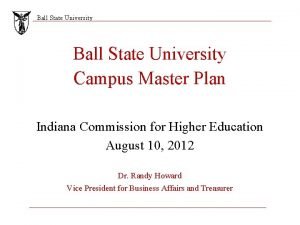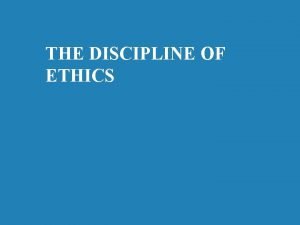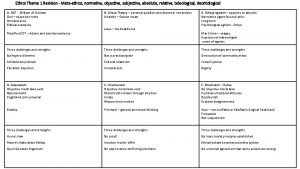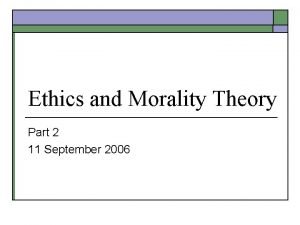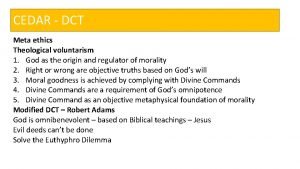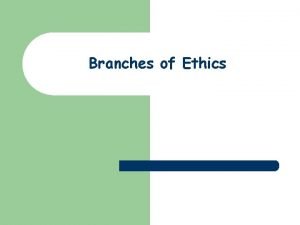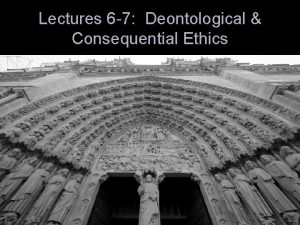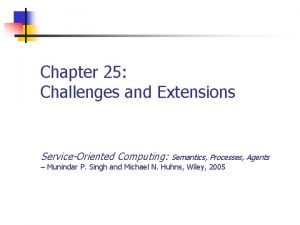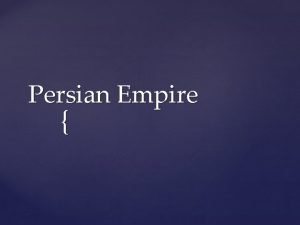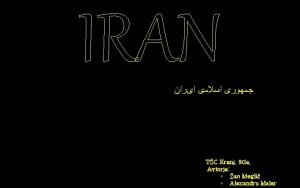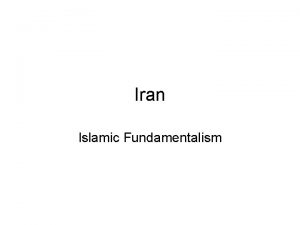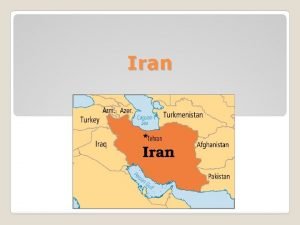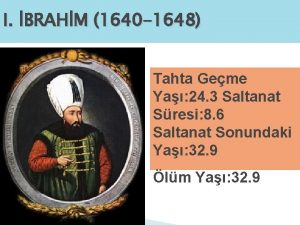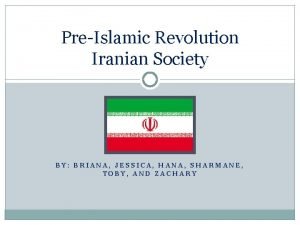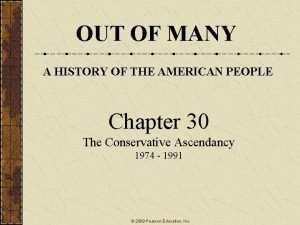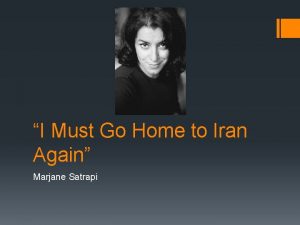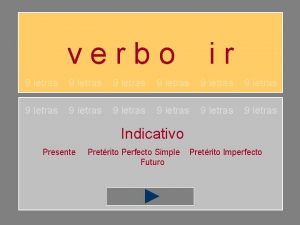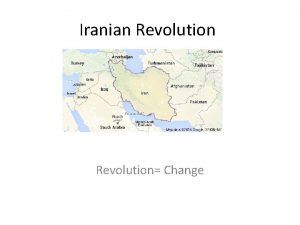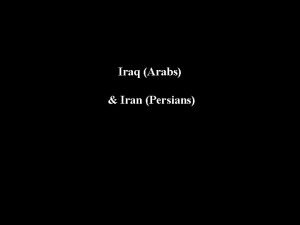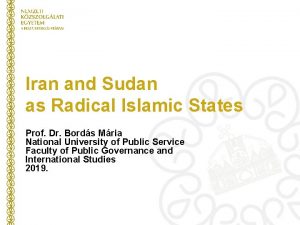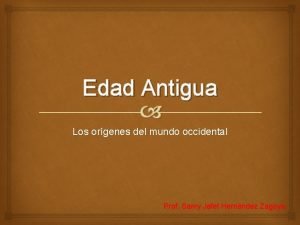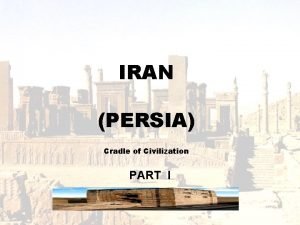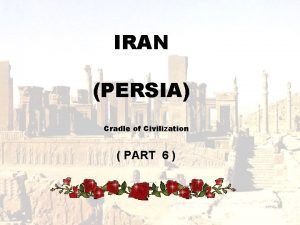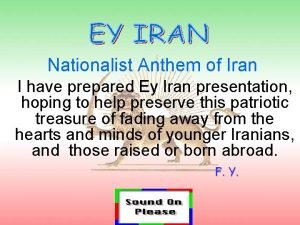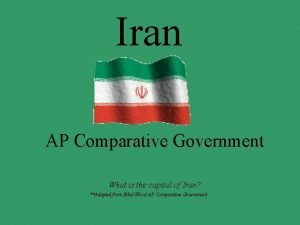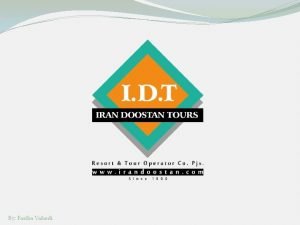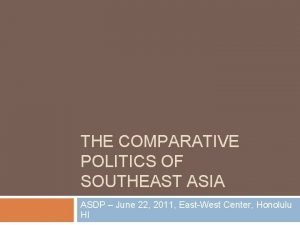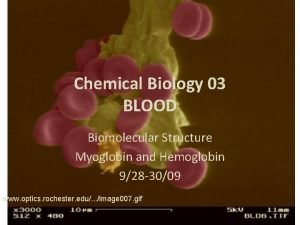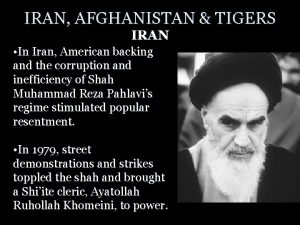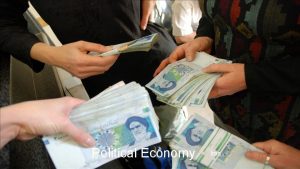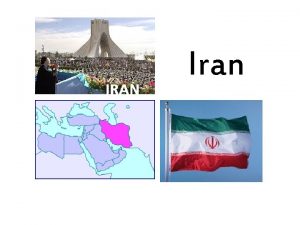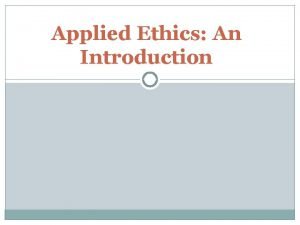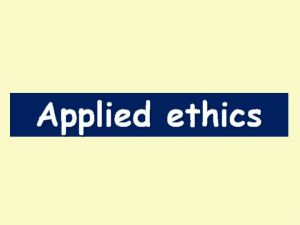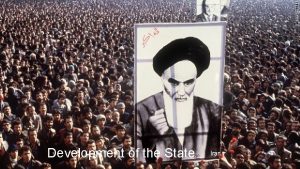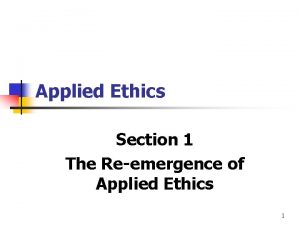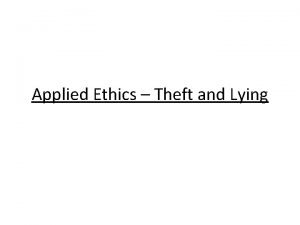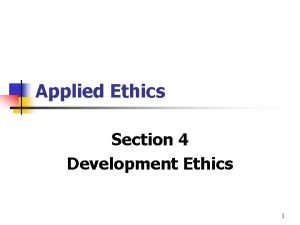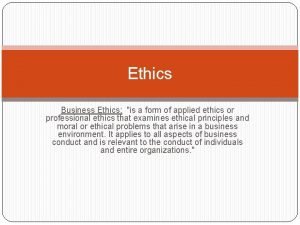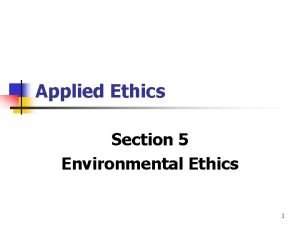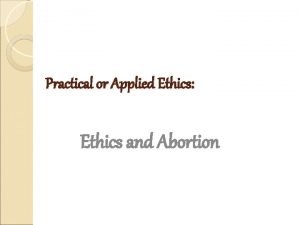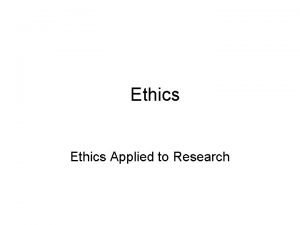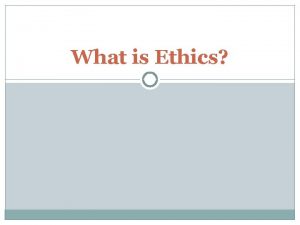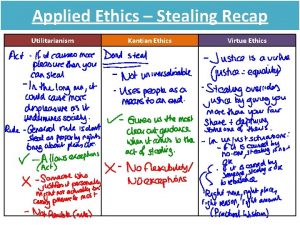State of Applied Ethics In Iran Iran Iran
























































- Slides: 56

State of Applied Ethics In Iran

Iran

Iran • Persia (2 -3% Arab people) • Shia Islam (not Sunni) • Known for philosophy, poetry and Medicine • 1300 miles from tip to tip • Borders Pakistan, Afghanistan, Turkmenistan, Turkey, Iraq, Armenia and Azerbaijan.


Iran • Iran: About 640, 000 square miles (Texas, New Mexico, Arizona, and California together) • Iraq: 167, 000 Sq Miles • Saudi Arabia: 755, 000 square miles • Turkey: 780, 000 Sq Miles

Persian Empire








































TUMS • University of Medical Sciences (TUMS) • Pioneer in biomedical research in the country. • Number of TUMS articles in Medline has increased 2. 5 fold from 301 in 2003 to 741 in 2006. • In ISI Web of Science, this number has increased from 226 in 2003 to 515 in 2006. • While about 3% of all university faculty members in the country are affiliated to TUMS, about 36% of the country's biomedical publication and 7% of its total international articles are authored by them.

Medical Ethics and History of Medicine Research Center • Founded in 2002 and approved in 2004, Medical Ethics and History of Medicine Research Center at TUMS is one of the youngest research centers of Tehran University of Medical Sciences. It is a pioneer research center in its filed in Iran. This research center consists of two departments of medical ethics and history of medicine, with their own specific strategic plans and objectives. The main aim of MEHR is to improve the medical ethics and history of medicine knowledge among Iranian medical society. MEHR has launched some activities in policy making, research, educational and publication fields.

Examples of the most important activities: Policy making 1. Compilation of National Strategic planning in Bioethics 2. Compilation of National Guidelines for Research Ethics 3. Compilation of the flowchart and regulations of the Committees of Ethics in Research in TUMS 4. Curriculum development of medical ethics for undergraduate medical students

Policy Making 1. Compilation of National Strategic planning in Bioethics 2. Compilation of National Guidelines for Research Ethics 3. Compilation of the flowchart and regulations of the Committees of Ethics in Research in TUMS 4. Curriculum development of medical ethics for undergraduate medical students

Research 1. Compilation of National Code of Medical Ethics 2. The Specific National Ethical Guidelines for Biomedical Research 3. Ethical Guidelines for Clinical Trials Ethical Guidelines for Research on Minors Ethical Guidelines for Genetic Research Ethical Guidelines for Gamete and Embryo research Ethical Guidelines for Transplantation Research Ethical Guidelines for Research on Animals 4. A Critical survey of principles of Bioethics in the light of Islam 5. Ethical Assessment of Kidney Donation In Iran 6. A survey of physicians’ views on terminally – ill patients 7. A comparative and analytical survey of Euthanasia

Goals of a Recent Medical Ethics Congress

Comparative Studies - Medical ethics in the Islam and other religions’ points of view - Philosophical approaches to medical ethics - Medical ethics from Iran and other countries law perspective

Practical Issues in Medical Ethics 1. Professional attitude and commitments 2. Patient-physician relationship 3. Autonomy and informed consent 4. Confidentiality and privacy 5. Medical errors 6. Ethics in research 7. Justice and resource allocation 8. Medical ethics problems in end-of-life cares 9. Issues in prenatal medical ethics 10. Medical ethics in vulnerable populations (prisoners, kids, psychopaths…) 11. New issues in medicine (cloning, transplantation, - medical genetics, assisted reproductive techniques…)

Making the Medical Ethics Pracitical • Medical ethics rules and laws • Medical ethics academic and hospital committees

4 Medical Ethics Education 1. Traditional and modern training of medical ethics 2. Methods of medical ethics training 3. The necessity of medical ethics training objectives

Conclusions • There is a lot of work to do in Iran and they are seeking cooperation and alliances with other academic centers to help them develop their applied ethics cirriculum. • This is a window of opportunity which we should not pass up. • Academic relationships can foster better cross cultural understanding and unity.
 Applied technology building ball state
Applied technology building ball state Descriptive ethics vs normative ethics
Descriptive ethics vs normative ethics Descriptive ethics vs normative ethics
Descriptive ethics vs normative ethics Macro ethics meaning
Macro ethics meaning Valuing time in professional ethics
Valuing time in professional ethics Methaethics
Methaethics Descriptive ethics vs normative ethics
Descriptive ethics vs normative ethics Compensatory justice examples
Compensatory justice examples Metaethics vs normative ethics
Metaethics vs normative ethics Metaethics vs normative ethics
Metaethics vs normative ethics Virtue ethics vs utilitarianism
Virtue ethics vs utilitarianism Teleological ethics vs deontological ethics
Teleological ethics vs deontological ethics Satrapy of iran
Satrapy of iran Iran hostage crisis timeline
Iran hostage crisis timeline Iran prebivalstvo
Iran prebivalstvo Iran cat map
Iran cat map Iran before 1935
Iran before 1935 Lehistan günümüzde neresi
Lehistan günümüzde neresi William knox d'arcy
William knox d'arcy Iran religion
Iran religion Oliver north iran contra affair
Oliver north iran contra affair Language in iran
Language in iran Plastic omnium h300
Plastic omnium h300 I must go home to iran again
I must go home to iran again Export development bank of iran
Export development bank of iran Rapto de la iglesia
Rapto de la iglesia Eterno castigo
Eterno castigo Which number on the map represents the country of iran?
Which number on the map represents the country of iran? Verbos com 9 letras
Verbos com 9 letras The voice iran
The voice iran The shepherd was known for his *
The shepherd was known for his * Savak iran
Savak iran Local guide program
Local guide program Razboiul iran irak
Razboiul iran irak Iran
Iran Iran population
Iran population Iran
Iran Iran
Iran Iran cyber
Iran cyber Garamol
Garamol Squeeky fromme
Squeeky fromme Parsi language
Parsi language Abdollah arefkia
Abdollah arefkia Iot iran
Iot iran Azerbaycan yüzölçümü
Azerbaycan yüzölçümü Dba iran
Dba iran Iranian anthem lyrics
Iranian anthem lyrics Iran ap comparative government
Iran ap comparative government Iran doostan
Iran doostan 2 properties of a liquid
2 properties of a liquid State to state regionalism
State to state regionalism S r flip flop excitation table
S r flip flop excitation table Encoding bugs in software testing
Encoding bugs in software testing Svjetlana kalanj bognar
Svjetlana kalanj bognar Orbital vs subshell
Orbital vs subshell T and r state of hemoglobin
T and r state of hemoglobin Absorptive state and postabsorptive state
Absorptive state and postabsorptive state
